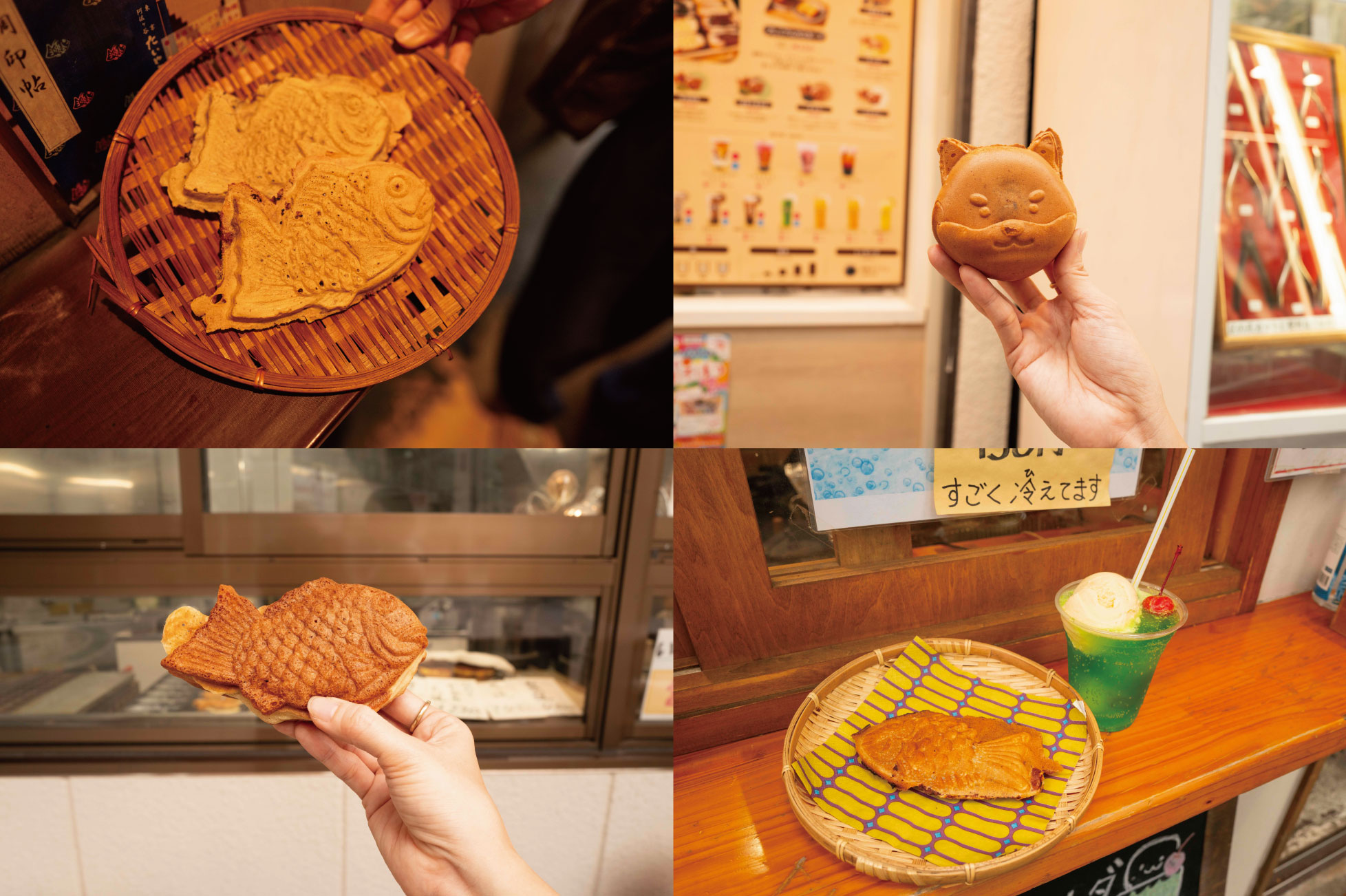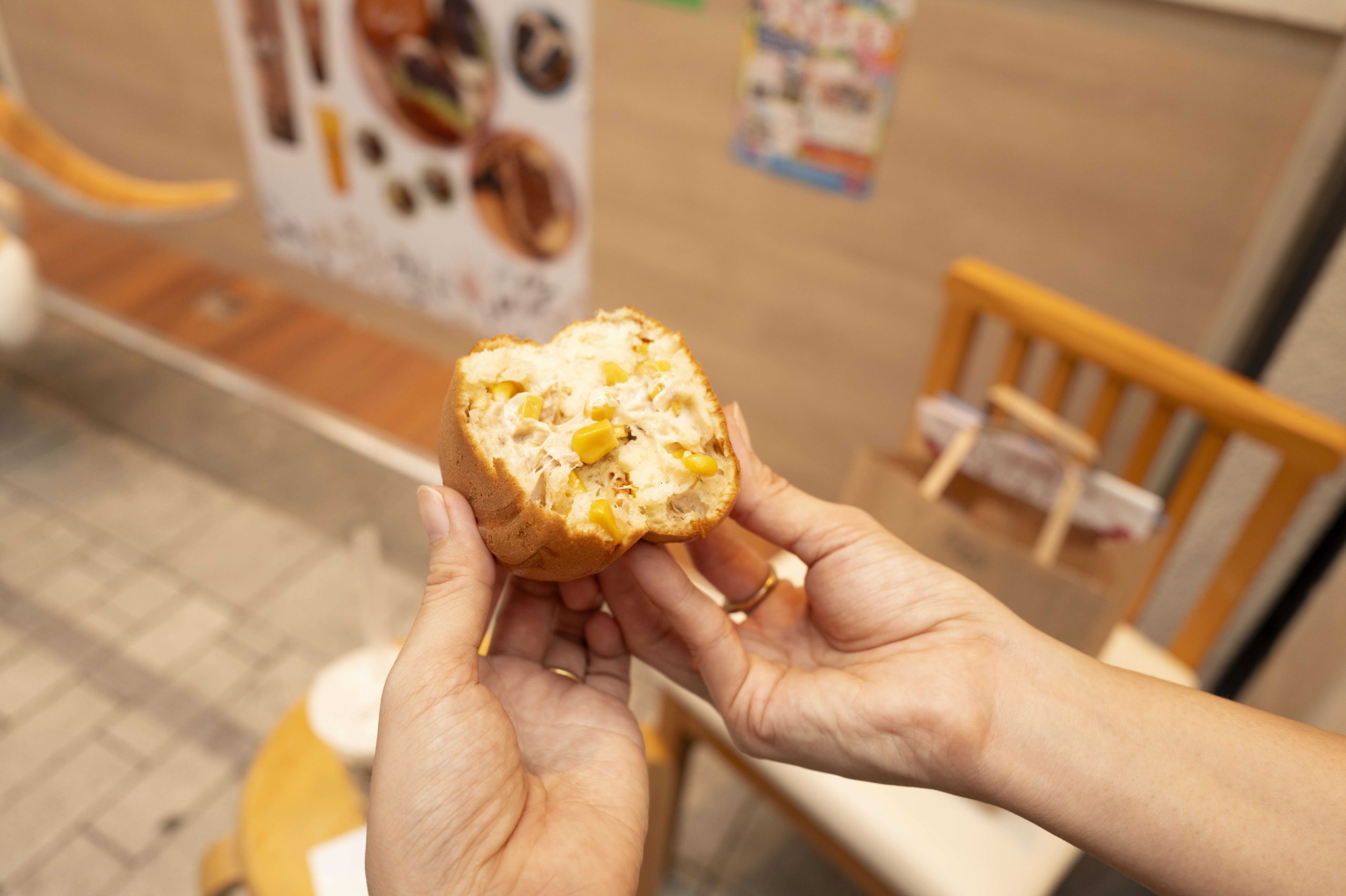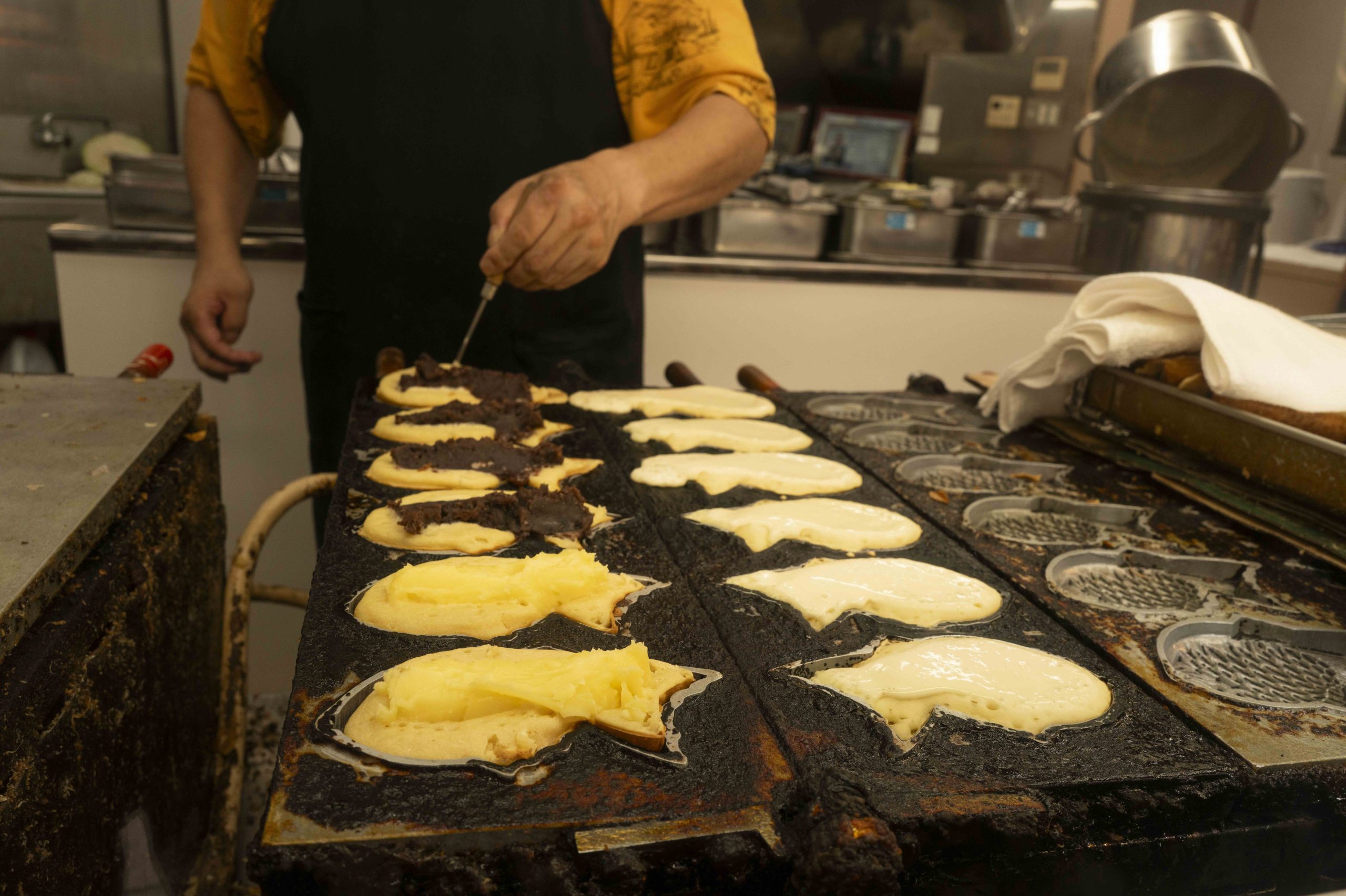What is taiyaki?
The project for this map began with the thought that there might be many taiyaki stores in Asagaya.
In order to confirm that this is indeed the case, it is necessary to determine what “taiyaki” really is. There is no industry association, nor is a license required to make taiyaki, so there has never been a definition.
As most people imagine, taiyaki is a confectionery made by baking a flour or other doughy pastry in the shape of a sea bream with a filling of mainly tsubu-an (sweet bean paste). However, there are also many taiyaki-like products throughout Japan that are shaped differently from taiyaki, such as in the shape of other creatures, regional specialties, or characters of some kind. Can they be called taiyaki?
Other sweets similar to taiyaki are imagawa-yaki (called by different names in different regions, such as oban-yaki, kaiten-yaki, oyaki, nijyu-yaki, etc.) and ningyo-yaki. These are also made by baking a flour dough skin with a sweet bean paste, but are they different from taiyaki?
First, we decided to exclude imagawa-yaki and ningyo-yaki from taiyaki, although they are similar confections, since each is an independent genre. Imagawa-yaki is simply a disc or a small oval shape and does not have a design (some kind of shape) that is characteristic of taiyaki. Ningyo-yaki is also different in that it is smaller than taiyaki and above all, it is sold at room temperature rather than freshly baked. On the other hand, those shaped other than taiyaki are interpreted as “taiyaki of a different shape”.
This is because many stores describe their taiyaki as “xx-shaped taiyaki,” and the company that manufactures the shaped molds calls them “original taiyaki molds,” so it can be said that taiyaki are made in various shapes.
Based on these points, this “Asagaya Taiyaki Map” defines “taiyaki” as those that meet the following conditions.
1. baked bean jam (filling) wrapped in a flour or other dough
2. A design (shape) that has some meaning.
→This distinguishes it from imagawa-yaki.
3. baked in the store and served basically warm
→This is what distinguishes it from ningyo-yaki.
Recently, the filling of taiyaki has become more diversified. The most basic type of filling is tsubu-an (whole sweet beans), but some stores also offer koshi-an (sweet bean paste) or shiro-an (white bean paste). Also, many stores now offer custard cream, and there is a wide variety of cream products available. In addition, taiyaki filled with okonomiyaki ingredients and other side dishes are also on the rise.
The Taiyaki Map survey defines “taiyaki” as any food that is contained in a skin of some meaningful shape, regardless of its contents.
Why Asagaya is “the hottest taiyaki town in Japan
There are 3,046 restaurants in the taiyaki and oban-yaki genre registered on the restaurant review site “Tabelog” nationwide and 285 in Tokyo. (As of October 22, 2024)
The cities with the most taiyaki stores (excluding oban-yaki and ningyo-yaki) in Tokyo are in the following order
[2nd place] Asakusa … 6 stores
[3rd place] Kichijoji…5 stores
[4th place] Asagaya…4 stores
However, Asagaya has one taiyaki store that is not listed in the “Tabelog,” so the true number of taiyaki stores is five. On the other hand, Kichijoji, in third place, includes a mobile store that opens only one day a week, so the number of permanent taiyaki stores is four, making Asagaya a town with more taiyaki stores.
In addition, the following table adds the number of restaurants listed in each city in the “Tabelog”.

Despite the fact that there are not many restaurants, you can see that many taiyaki stores are concentrated in Asagaya.
There may be some regional cities with extremely few restaurants that have a higher ratio of taiyaki restaurants to the total number of restaurants in the area, but among cities with a certain number of taiyaki restaurants, Asagaya has by far the highest ratio of taiyaki restaurants, which we judged to be a city with strong competition = “taiyaki is hot” as it is. This is the reason why we decided that Asagaya is a “town where taiyaki is hot”.
As an additional note, there are about 150 taiyaki stores in Japan that are commonly referred to as “natural” taiyaki stores, which are few in number. Asagaya Minami 1-chome is the only place in Japan where there are several iccho-yaki (Bake each one using individual molds) stores in the same town or street. From this point of view, it can be said that Asagaya is a town where taiyaki is hot.
How was taiyaki born?
~The most popular theory is that it evolved from letter ware.
Several theories exist regarding the origin of taiyaki. This is because no one knows for sure since there are no recorded documents since the confectionery has been created and eaten by the common people in their daily lives.
Among them, the most well-known theory is that the founder of Naniwaya Sohonten, a long-established shop still operating in Azabu Juban, improved on the Imagawa-yaki (oban-yaki) style. Since the store was founded in 1909, it is the oldest taiyaki store in existence, and many people are familiar with this theory, as episodes of its founding have been introduced on NHK and many other TV programs. However, it is said that the origin of taiyaki may be much older, as newspaper articles have been found that claim that taiyaki stores existed before 1909.
Another theory is that it originated in Mie Prefecture. Mie Prefecture, which has prospered since the Edo period (1603-1867) with the “Oise pilgrimage,” is home to many Japanese confections made from azuki beans, including the famous Akafuku rice cake. Imuraya, known for its canned boiled azuki beans and azuki bean bars, is also a Mie Prefecture company.
It is also known that there were many taiyaki stores that sold taiyaki in the old style of “iccho-yaki,” and some of them opened stores in department stores and expanded their business to the local area. This is the reason why taiyaki is said to have originated in Mie. However, since the Naniwaya Sohonten mentioned above is older than the store said to have originated in Mie, the credibility of this theory is also questionable.
A new theory that has emerged in recent years is that of the origin of “monjiyaki. This theory is clarified in “The Prewar History of Okonomiyaki” (kindle book, written by the Modern Food Culture Study Group), and is further supplemented by a series of articles on the web-based gourmet site “Retty”. The content of the book is very convincing, as it is based on a large collection of old documents, mainly newspaper articles.
According to the report, the origin of taiyaki can be traced back to “monjiyaki,” or “character yaki,” which was popular during the Edo period. Monjiyaki, sold mainly at food stalls, was made by kneading udon flour (wheat flour), dripping it onto a griddle, and baking it in the shape of a letter or a simple picture. Over time, this monjiyaki evolved into okonomiyaki with more variations in flavor, and the shape of the pancakes became taiyaki as the direction of the pursuit of shape was pursued.
There is also another trend from imagawa-yaki (oban-yaki). Unlike today’s imagawa-yaki, which were already sold in the mid-Meiji period (1868-1912), they were simply baked by pouring flour into a hollow in a griddle and baking it, without any red bean paste.
While it takes skill to create complex pictures with monjiyaki, the method of pouring flour into a mold and baking it is relatively easy. It can be imagined that the “tai” (sea bream), one of the popular shapes of monjiyaki, was made into a confectionary by casting. In any case, there is no doubt that taiyaki developed from the street snacks of the common people in the Edo period.
▼Asagaya Taiyaki Map (PDF) Download
Asagaya Taiyaki Map










